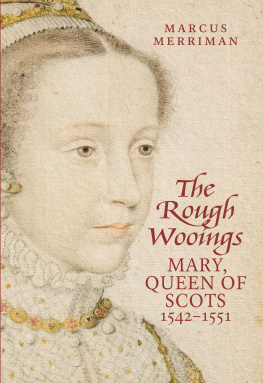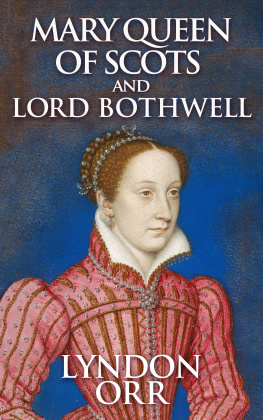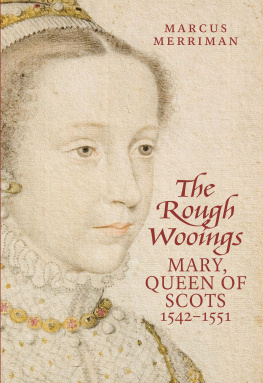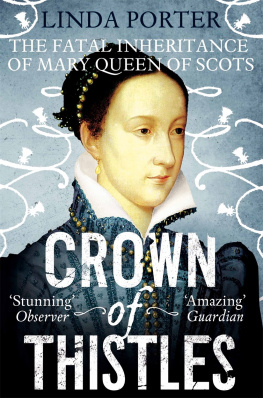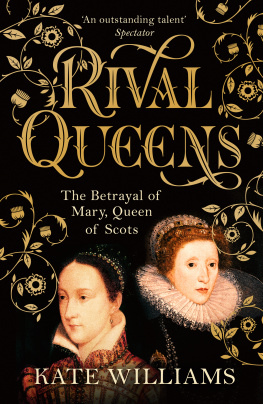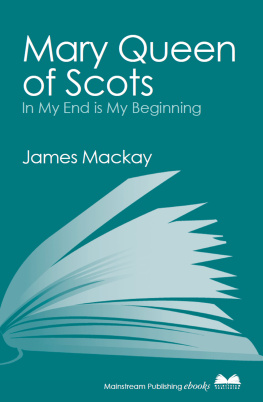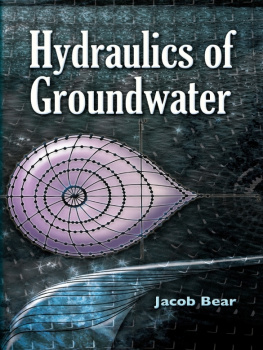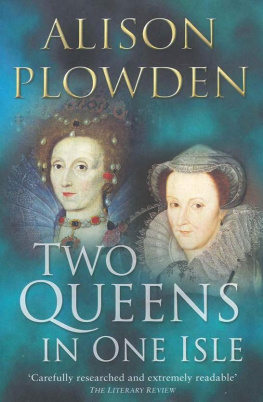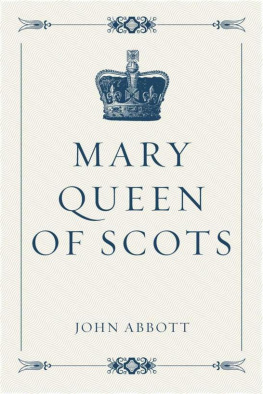Contents
Guide
MARY QUEEN OF SCOTS
First published in 1988 by George Philip
Republished as a paperback in 1991 by Collins and Brown
Revised edition published in 2001 by Tauris Parke Paperbacks
This edition first published in 2017 by
John Donald, an imprint of Birlinn Ltd
West Newington House
10 Newington Road
Edinburgh
EH9 1QS
www.birlinn.co.uk
ISBN: 978 0 857903 50 1
Main text Copyright The Estate of Jenny Wormald, 1988, 1991, 2001, 2017 Foreword and Afterword Copyright Anna Groundwater 2017
The right of Jenny Wormald to be identified as the author of this work has been asserted by her estate in accordance with the Copyright, Designs and Patents Act, 1988
All rights reserved. No part of this publication may be reproduced, stored, or transmitted in any form, or by any means, electronic, mechanical or photocopying, recording or otherwise, without the express written permission of the publisher.
British Library Cataloguing-in-Publication Data
A catalogue record for this book is available on request from the British Library
Typeset by 3btype.com
Printed and bound in Britain by MBM Print SCS Ltd, East Kilbride
Contents

Jenny Wormald in the BBC and Pioneer Productions programme Bloody Queens
(Credit: BBC/Pioneer Productions/Seamus McCracken)
Appreciation
My mother Jenny had a fascinating relationship with Mary Queen of Scots and it was my privilege to watch that play out over the last three decades and more of her life. Especially so as the Preface to the original 1988 edition includes my brother Toms and my first mentions in print. I well remember visiting the mound at Fotheringhay and Westminster Abbey at the time and being disappointed that I was too small to see Marys tomb properly! Mum had also featured in a Timewatch episode about Mary in 1987 commemorating the 400th anniversary of her execution, and came at it from a very different perspective from the other talking heads, including Gordon Donaldson and Antonia Fraser. That was when she made a comment that became stock-in-trade in the family Darnley was... a weed!
Mums view of Mary was certainly both controversial and outspoken and, as Anna Groundwater highlights in her Foreword to this new edition, she sparked off an at times vociferous debate, the dynamics of which continue to this day. Despite her grumbling, I think she found that stimulating and sometimes even enjoyable, and so she could not really let it go. It also reached widely beyond academia: as an example of that, my copy of the 1988 edition contains a positive review of the book by Ruth Rendell, which perhaps inevitably focuses on the did she / didnt she mystery around Darnley and the Casket Letters.
As with Mums wider work to challenge the misconceptions about Scotland in the early modern era, it was her remarkable rethink of Scotlands nobility in the fifteenth and sixteenth centuries which allowed her to reassess Marys performance as a ruler, and come to her ultimate conclusion of Marys failure. That conclusion, while eliciting some fierce criticism, made her a welcome and lively addition to many articles, programmes and interviews. In common with all of Mums work, these were never dull or ambiguous in terms of the views she expressed. I can still hear those ringing words tedious creature!; yet when we went to visit the new statue of Mary at Linlithgow in late 2015, both my brother and I were surprised at the calmness of Mums reaction, although she did mutter, well who elses heart would it be! I think Anna captures the complex dynamic of Mums opinions: it wasnt personal, she didnt dislike Mary per se, but she did think the romantictragic mythmaking made for very poor history. And that it was a waste of time when there was so much better history to study.
So Mums approach to Mary was also very much rooted in her wider approach to historical study. Those who were taught by her will recognise that no-nonsense and forceful expression of views throughout the volume, but as always written in an engaging and approachable way. My brothers and I were lucky enough to have ready access to that no-nonsense approach, as were her many friends, colleagues and students over the years. This interaction not least led to the remarkable and deeply touching reaction at the time of her death, in which that relationship with Mary was one of the oft-repeated elements. Mums posthumous appearance on the BBC and Pioneer Productions programme Bloody Queens gave her an excellent opportunity to put her message across one more time in person, as the republication of A Study in Failure now does in print.
The family are immensely grateful to Hugh Andrew, Mairi Sutherland and Tom Johnstone at Birlinn, and Anna Groundwater at the University of Edinburgh (where Mum happily spent the last years of her working life), for making the republication of Mary Queen of Scots: A Study in Failure possible. We hope that it continues to spark interest and debate as it has done since its original publication. As Anna makes very apparent, things have moved on in the thirty years since, and will continue to do so. Mum would be pleased with that. It is very heartening that there are so many themes and issues still to explore in the coming years. With that in mind, my brothers, Andrew and Tom, and I are very pleased to dedicate this new edition to Mums memory.
Luke Wormald
Foreword
Jenny and Mary, A Complicated Relationship
The first publication of Jenny Wormalds Mary, Queen of Scots: A Study in Failure in 1988 was greeted by howls of outrage, and some more considered opinion. Both of which (I suspect) would have been received by the author with gleeful joy. Any outrage was a measure of the emotive nature of response to Marys misfortunes that have dogged understanding of her reign. One only has to read customer reviews of the book on Amazon to see the intensely personal and empathetic identification of readers with Marys fate that precludes disinterested judgement; more scholarly criticism too has occasionally succumbed to a tinge of the sentimental. But such reaction was also probably what Jenny was hoping for in stimulating, reinvigorating and redefining the terms of the debate.
The book was published as part of a Monarchs and Monarchies series, of which Dr David Starkey was Series Editor, and was thus subject to that series expectations of content and format (significantly, no footnotes). Its writing was done amidst a welter of books, dramatizations and speeches to commemorate the 400th anniversary of Marys execution. From the first pages, Wormald spells out her objectives. This was not to be a personal biography: instead the focus was to be on Marys actions as monarch, as queen, during her personal reign, 1561 to 1567. As such, Wormald did not set out to write a definitive study of the reign, but to open up the lines of enquiry sketched out here, to encourage debate, and thus a more objective assessment of Marys monarchical abilities (). It is important to remember this, in terms of what Wormald was trying to achieve here. To some extent the book can be seen as an extended opinion piece a polemical book-length essay, as


